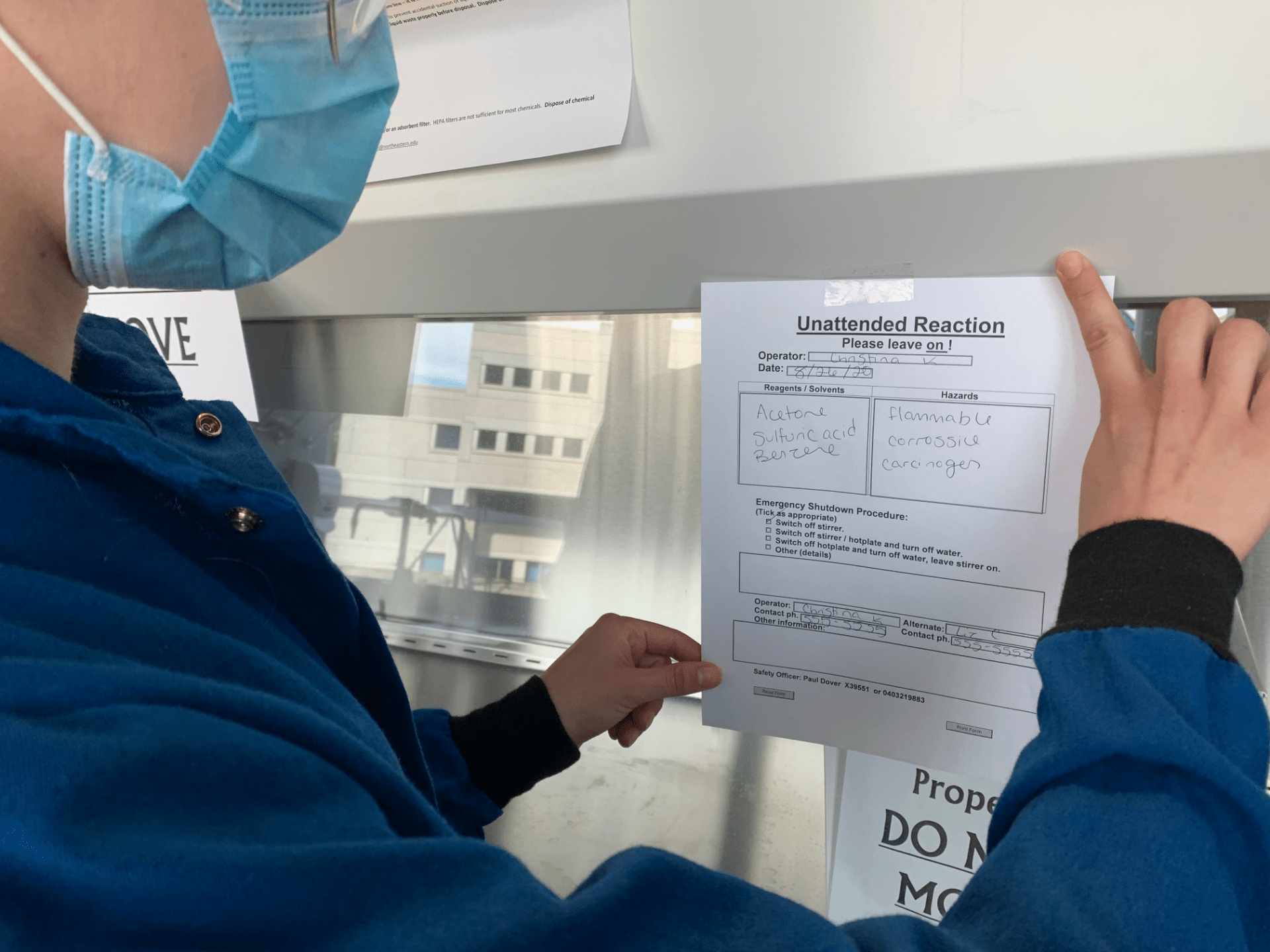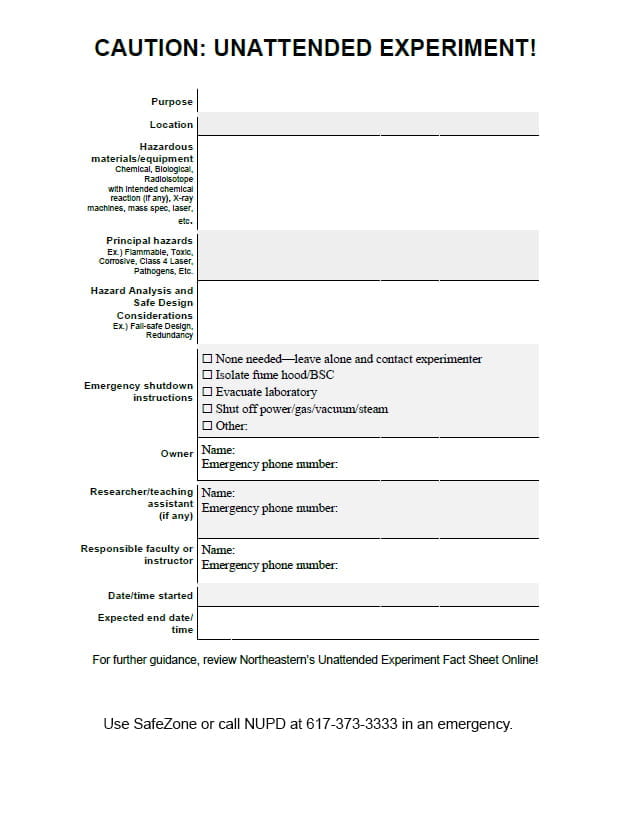Unattended Experiments:
Signage and Preparation

Key Takeaways
- Unattended experiments must be designed as “fail safe”
- Consider all risks as unattended experiments can cause great harm
- Unattended experiments include a posting, similar to the one attached here.
Procedure For Running Unattended Equipment and Experiments
Equipment and experiments that run unattended during the day and overnight have the potential of causing significant problems and harm to University personnel, facilities, and equipment. Although we discourage this practice as much as possible, particularly when hazardous substances are involved, we do recognize there is a need to run these experiments at certain times.
Conduct a Hazard Analysis
Consider the possible hazards that could occur as a result of failures, malfunctions, operational methods, environments encountered, maintenance error and operator error. These hazards can be identified by looking at the system as a whole and identifying which failure(s) could occur. Some examples include:
- WATER: If water was suddenly interrupted or a hose pulled out or burst, would the system overheat, flood the laboratory, or cause some other problem?
-
SIGNAGE: If appropriate signage was not used, could someone mistake the containers or turn a switch that was intended to remain open/closed?
- POWER: If power was suddenly interrupted would the system or safety features for the system also be shut down?


